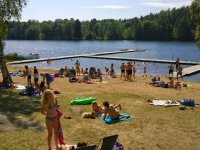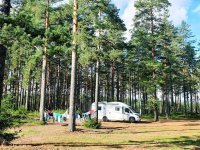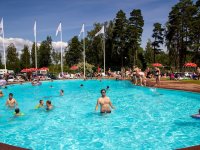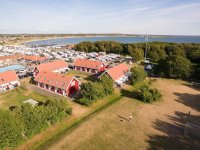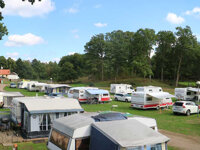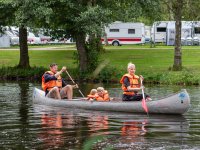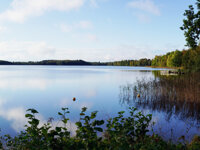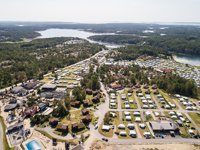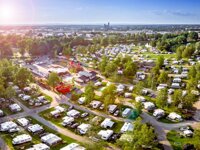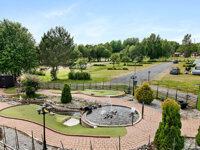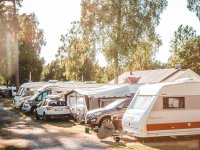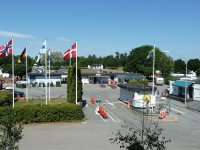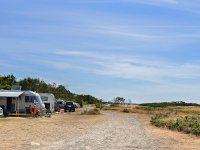Camping in Sweden
66 campsites in Sweden
Campsite Listing Google Map
The following consent is required:
Tracking & performance, Targeting & advertising.
Sweden
The largest of the Scandinavian countries, Sweden is sparsely populated and is a land of extensive pine forests and the midnight sun. Its people are very relaxed and a liberal attitude permeates the culture, as do the long-held traditions and festivals that form a central part of Swedish life.
The south is, unsurprisingly, the most popular area for camping in Sweden. It’s dominated by two great lakes and is home to several historic ports, such as Gothenburg and Malmö. Its capital, Stockholm, is built on 14 small islands and is an attractive, vibrant city with plenty to offer visitors.
A stronghold of the Viking era, Skåne is a patchwork of forest and farmland, with castles and manors dotted all around. From here, it’s not far to Öland island, a favourite among holidaymakers who enjoy camping in Sweden thanks to its sandy beaches and rolling pastures.
Find choices for campsites in Sweden using our listing. Filter by region or theme to refine your results and select from inspected sites and other options.
Unknown matrix block type: tableOfContents2!
Basic Information

Capital Stockholm
Currency Swedish Krona (SEK)
Language(s) Swedish
Time Zones CET (UTC+01)
Summer (DST) CEST (UTC+02)
Telephone Code +46
Units Metric
EU Member Yes
Schengen Area Yes
Tourism Website www.visitsweden.com
Sweden is a member of the European Union, and customs inspections are occasionally conducted on individuals and vehicles crossing the border to ensure compliance with Sweden's regulations.
Shopping in Sweden

Scandinavian design is world-famous for its clean lines and sleek, contemporary look—Swedish products, whether furniture, handbags, or even sweets, often fit this mould. Sweden is known for its minimalist and functional design. Look out for brands like IKEA for home furnishings and decor, H&M for fashion, and various Swedish designers for high-quality products. Major cities in Sweden have well-known department stores like NK (Nordiska Kompaniet) in Stockholm and NK Gothenburg. These stores offer a variety of luxury brands, designer items, and high-quality goods.
When it comes to souvenir shopping in Sweden, you have a wide range of options to choose from. Things to look out for when souvenir shopping are: Dala horses are hand-painted wooden horses and are a traditional Swedish symbol. They come in various sizes and colours and are a charming representation of Swedish folk art. Scandinavia has a rich Viking history. You can find items like Viking ship replicas, jewellery with Viking motifs, and even clothing inspired by Norse designs. Swedish liquorice, also known as "Saltlakrits", is a popular and distinctive type of liquorice that has a unique flavour and texture. One of the standout characteristics of Swedish liquorice is the salty variety. It's an acquired taste and can be intense for those not used to it. Aquavit is a traditional Scandinavian spirit with vital cultural significance in Sweden, Norway, Denmark, and Iceland. It is a distilled alcoholic beverage often flavoured with various herbs, spices, and botanicals, giving it a unique and distinctive flavour profile. Aquavit is typically enjoyed as a sipping spirit or used in cocktails.
Most shops, including grocery stores and retail stores, typically open around 10:00 a.m. and close around 6:00 p.m. Some larger cities and shopping centres might have extended hours until 8:00 p.m. On Saturdays, shops generally have shorter hours. They typically open around 10:00 a.m. and close around 4:00 p.m. Some larger stores might stay open until 6:00 p.m. Many shops are closed on Sunday.
Money

The currency used in Sweden is the Swedish Krona, abbreviated as "SEK" or represented by the symbol "kr." ATMs are widely available in Sweden, and credit/debit cards are widely accepted for payments in most places, including shops, restaurants, and public transportation. Cash usage has decreased in recent years, and card payments are the norm for many transactions. It is a good idea to have a mix of payment methods while travelling in Sweden, including a small amount of local currency especially when visiting smaller towns and villages where card acceptance may be limited.
Public Holidays
- New Year's Day: January 1st
- Epiphany: January 6th
- Good Friday, Easter Sunday, Easter Monday, Ascension Day and Pentecost Sunday
- Labour Day: May 1st
- National Day: June 6th
- Midsummer Eve: June 23rd
- Midsummer Day: June 24th
- All Saint's Day: November 4th
- Christmas Eve: December 24th
- Christmas Day: December 25th
- Second Day of Christmas: December 26th
- New Year's Eve: December 31st
Please note Some dates are moveable, so please check before travelling.
Driving in Sweden

Visitors to Sweden who wish to drive in the country must comply with the following requirements:
- A valid driver's license: Visitors must have a valid driver's license from their home country
- Minimum driving age: The minimum driving age is 18 years old.
- Car insurance: Visitors must have valid car insurance for their vehicle, covering both the driver and passengers.
- Vehicle registration: Visitors must have a valid vehicle registration for their car, which must be displayed on the vehicle.
- Vehicles registered in the UK must display the letters “UK” when driving in Sweden. The identifier can be incorporated in vehicle number plates (along with the Union Flag) or as a separate sticker.
- Road rules: In Sweden, you drive on the right and overtake on the left. Vehicles from the right generally have priorityThe use of seat belts is mandatory for all occupants of a vehicle. Visitors must follow Slovenia's traffic laws, including speed limits, traffic signals, and road signs.
- Use dipped headlights during the daytime all year round and on all roads
- Safety equipment: A red warning triangle is compulsory in case of an accident or breakdown. It is recommended that visitors equip their vehicle with a fire extinguisher and a first-aid kit, reflective jacket and spare bulbs for external lights.
- Alcohol law: The drink-drive limit for all drivers is 0.02%. Random tests are carried out, and drivers must always submit to a test at the request of the police, even if there are no grounds for suspicion.
- Cars have to pay a toll on some roads, while there are also bridges that have a charge – Oresund, Motala, Sundsvall, Storebaelt and Svinesund.
- Large wild animals, including elk and moose, often run out into the road in rural areas.
- When driving a car, during the period 1 December to 31 March, you must have winter tyres on your vehicle if there are winter conditions.
Emergency Services
Sweden's emergency number for life-threatening emergencies. To access police, ambulance, fire brigade services, air, sea and mountain rescue 112
Healthcare Advice 1177
Non Urgent police matters 114 14
Information about major accidents and crises in Sweden 113 13
Weather
SWEDEN WEATHERIt's important to note that Sweden's weather can vary significantly between the southern and northern regions. The parts of the north of Sweden, such as Lapland, experience more extreme weather conditions, including colder temperatures and a more extended period of darkness during winter. Sweden's weather varies significantly throughout the year due to its northern latitude and diverse geography.
Winters in Sweden are cold and can be quite harsh, especially in the northern regions. Average temperatures can range from -6°C to -1°C in the southern parts and even colder in the north. Snow is common, and many lakes freeze, making winter sports such as skiing and ice skating popular.
In Spring, temperatures start to rise, and the snow begins to melt. However, March can still be cold, but April and May are slightly warmer. Spring can be unpredictable in terms of weather, with occasional rain and fluctuations in temperature.
Summers in Sweden are short but can be quite pleasant. Average temperatures range from 15°C to 25°C, with the southern parts being warmer than the north. The days are long, and in the northernmost parts of Sweden, the sun doesn't set for a period known as the "midnight sun." This is a popular time for outdoor activities and festivals.
The beginning of autumn in can still be mild and pleasant, with average temperatures ranging from 10°C to 15°C in the southern parts. September is a popular time for outdoor activities where people are seen enjoying the last traces of warmth before the colder months arrive.
